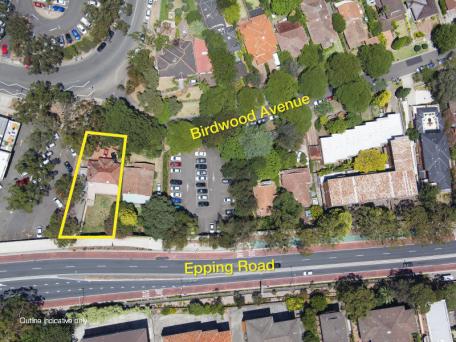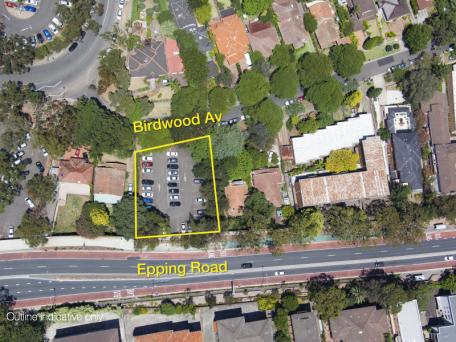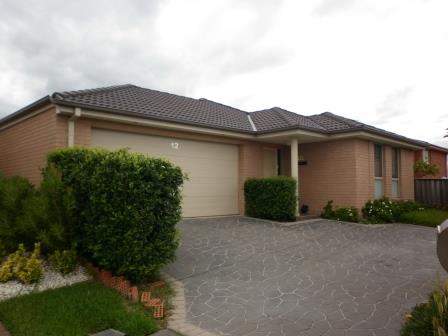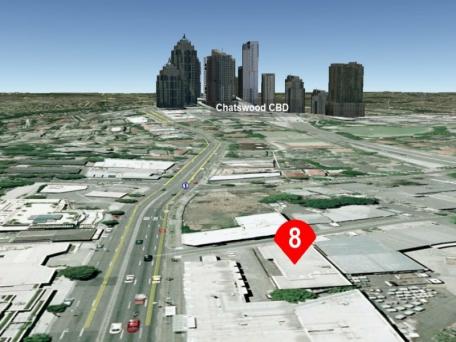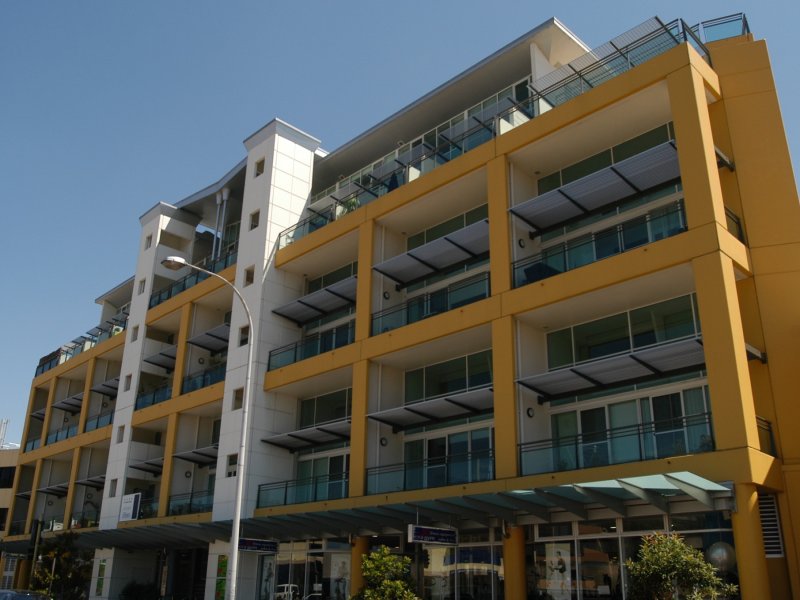Blog - Market Updates
Posted by Admin
Australian Property Market Update – Q1 2025
February interest rate cut supports an early sentiment boost, but headwinds remain. Australia's residential markets have made a promising start to 2025. Sydney and Melbourne have both bounced back a little from declines. Brisbane, Perth, and Adelaide continue to grow, albeit at a slower pace. Of note, the price spread between houses and units nationally remains at a near record high (Figure 1), and in Sydney, is more than double. The smaller markets, however, have seen the spread close in recent quarters with unit price growth outperforming. Further interest rate cuts are expected to boost sentiment. A hung parliament post-election clouding housing policy and headwinds from global economic uncertainty, however, may see lumpy value movement for a period. A slight easing in population growth has released some of the pressure on the rental market, and with affordability barriers have contributed to a moderation in rental growth. Nevertheless, national vacancy was still sitting at just 1.3% in February. Supply remains limited, with CBRE forecasting a cumulative deficit of 75,000 apartments through to 2029. This dynamic suggests that rents will continue to rise at a moderate pace until more supply is delivered later in the decade. Sydney's market has regained some momentum into 2025, with value growth returning after a brief period of decline. House values led the way in Q1 whilst unit values declined slightly, although the pace of decline has moderated. For metropolitan Sydney, CoreLogic data to March, was showing: - the median house value at $1.473 million, up 0.5% q-o-q and 1.2% higher y-o-y; and - the median unit value at $851,900, down 0.1% in the quarter and 0.1% higher y-o-y.
CBRE
Posted by Admin
Australian Property Market Update – Q3 2024
Value growth is slowing and showing greater diversity between and within markets. Performance in Sydney during the September quarter has decelerated further. Melbourne’s values, both house and units, have declined. Performance in Canberra is patchy. Brisbane, Perth, and Adelaide, by contrast, continue to experience robust growth, although also starting to slow. Nationally, the price spread between houses and units remains at a near record high. CBRE’s Q3 2024 Residential Valuer Insights survey identified a slight moderation in demand conditions, with 42% of valuers reporting ‘strong’ to ‘very strong’ demand in their local markets, down from 54% in Q2. Just over half of valuers reported a balanced market. Price growth expectations have also moderated a little. Mirroring the Q2 survey, first home buyers and local investors were the most active purchasers, followed by upgraders and downsizers. Rental markets remain in undersupply across the country. National vacancy was sitting at 1.2% in September, with all capital cities apart from Canberra sub-2.0% and Perth and Adelaide trending sub-1.0% for some time. While lower overseas migration and increased investor lending suggest tight conditions may ease a little, supply pipelines remain constrained with little prospect of any significant supply-side relief over the medium term. CBRE forecasts suggest the future supply of apartments is likely to hover around 50,000 per annum over 2025-2029, well short of the estimated 75,000 per annum necessary to avoid further falls in vacancy.
Posted by Admin
Australian Property Market Update – Q2 2024
Pricing indicators across most major markets continued to show resilience over the final quarter of 2023 and into 2024, although some divergence in the pace of growth is now apparent. After leading growth in 2023, the pace of increase in Sydney has slowed, while momentum has been maintained, or even increased, in the smaller capitals. Melbourne is the exception, with flat to negative performance, largely a result of state-based taxation and regulation changes. Interest rates have likely peaked, with prospects of one or two OCR cuts by the end of 2024. Any cuts flowing through to mortgage markets will boost confidence and spur further price gains, particularly with demand conditions remaining strong. Rental markets continue to sit in undersupply, with national vacancy settled at around 1.0%. Supply pipelines remain constrained by elevated construction costs, although appearing to be stabilising, labour bottlenecks and squeezed profit margins impacting project feasibilities. New dwelling commencements in New South Wales are running at their lowest level in a decade. CBRE estimates Sydney's apartment delivery will average 14,500 pa. over 2024-28, well below the forecast 30,000 p.a. demand for housing stock. Gradual stabilisation of material costs may encourage development, although high labour costs and drawn-out approvals processes may continue to hinder supply. Rents are forecast to continue increasing, with growth averaging 5% pa. to 2028. Affordability pressures will see the pace of growth gradually ease from recent surges.
Posted by Admin
Australian Property Market Update – Q4 2023
Multiple interest rate rises and the ongoing cost of living pressures throughout 2023 were expected to considerably impact Australia's current mortgage holders, however, distressed sales were relatively minimised as the economy continued to operate close to full employment. Australia's economy grew by an estimated 2.1% in September 2022, with a forecast of 3.1% in 2025. Unemployment in September 2023 was 3.4% and is forecast to reach 4.3% by 2025 (Oxford Economics). The official cash rate was last set by the Reserve Bank of Australia at 4.35% on 5 December 2023. This rate was 3.10% a year ago. Oxford Economics forecast the official cash rate towards an average rate of 3.85% by the end of 2025.
Australian Property Market Update – Q2 2023
Australia's economy grew by an estimated 2.3% in March 2023, with a forecast of 1.6% in 2023. Whilst unemployment was recorded at 3.8% and is forecast to reach 3.9% over the same time (Oxford Economics). The weighted average total residential rental vacancy for Australian capital cities was recorded at 1.4% in March 2023, compressing 30 bps over the past quarter (REIA). Building approvals in the March 2023 quarter fell by 20.9% across Australia, compared to a fall of 6.1% a quarter ago. In this time, 24,237 houses and 12,955 apartments were approved. This was trending 12.4% lower for houses and 33.1% lower for apartments approvals compared to the quarter earlier. Australia's total population grew by 1.2% to 26.0 million persons in the year to June 2022.
Australian Property Market Update – Q4 2022
Australia's total population grew by 0.2% to 25.7 million persons in the year to June 2021. Over this time, the major cities of Australia saw annual population change of -0.1%, while inner regional areas of Australia saw population change of 1.1% and outer regional areas of 0.2% (ABS). The projected population growth to 2041, is higher, at 1.4% per annum (ABS). Australia's economy grew by 5.9% in September 2022, with a forecast of 1.70/. in 2023. Whilst unemployment was recorded at 3.5% and forecast to reach 4.0% over the same time (Oxford Economics). The official cash rate on 6 December 2022 had been raised 75 bps over the past three months, to a target of 3.10% by the Reserve Bank of Australia. The Oxford Economics forecast for the official cash rate is to be lifted towards a target of 3.54% by the end of 2023.
Posted by Admin
Australian Property Market Update – Q2 2022
The official cash rate target was increased 50 bps to 0.85% on 7 June 2022. According to the Reserve Bank of Australia, inflation was higher than earlier expected influenced by global factors, but domestic factors are playing a role too, Building approvals in the March 2022 quarter fell by 8.6% across Australia, compared to a fall of 14.7% a quarter ago. In this time, 28,687 houses and 16,726 apartments were approved. This was trending 9.9% lower for houses and 6,4% lower for apartment approvals compared to the quarter earlier (ABS).
Posted by Admin
Australian Property Market Update – Q4 2021
Australia was the fifth strongest residential market in the world at the end of September 2021 with 18.9%, as seven of eight capital cities recorded double-digit price growth. The last time Australia was in the Top 5 was in the last quarter of 2015 being ranked 4th, with 10.7% annual growth, a good yardstick to demonstrate the current strength and resilience of the global housing market despite living through a global pandemic. Population in Greater Sydney was estimated at 5.4 million persons in June 2020, with annual population growth of 1.1%. The projected population growth to 2041, is higher, at 1.6% per annum (ABS).
Posted by Admin
Australian Property Market Update – Q2 2021
Australia's economy grew by 1.1% in the year ending March 2021, with the unemployment rate trending at 5.6% in March 2021 (ABS). The official cash rate target was 0.10% as at June 2021. Population in Greater Sydney was estimated at 5.4 million persons in June 2020, with annual population growth of 1.1%. The projected population growth to 2041, is higher, at 1.6% per annum (ABS).
Posted by Admin
Australian Property Market Update – Q4 2020
Australia’s economy contracted by 3.8% in the year ending September 2020, with the unemployment rate at 6.9% in September 2020 (ABS). The official cash rate target was 0.10% as at December 2020. In the September 2020 quarter, average mortgage lending rates to owner occupiers fell by 101 bps to 2.35% for a 3-year fixed term loan and was down 42 bps to 4.52% for a standard variable loan. By comparison, for investors, a 3-year fixed term fell by 109 bps to 2.71% and a standard variable loan was down by 42 bps to 5.10% (RBA).
Posted by Admin
Australian Property Market Update – Q4 2019
Economic growth was recorded at 1.4% annual growth in June 2019. Unemployment across Australia was 5.3% in October 2019. The official cash rate target was 0.75% on 6 November 2019. In September 2019, lending to households was down 15.0% compared to the previous year. Annual growth for residential building approvals had fallen 27.0% in September 2019. Australian median house values were down 1.0% in the year ending September 2019 (although rising 2.7% in the last quarter) to $773,500. Apartment values were down 2.0% over the year ending September 2019 (but up 1.8% in the last quarter) to $539,500.
Posted by Admin
Australian Property Market Update – Q1 2019
Economic growth was recorded at 3.4% annual growth in June 2018. Unemployment across Australia was 5.0% in the December 2018 quarter. The official cash rate target remained unchanged at 1.50% on 7 February 2019. In December 2018 housing finance annual growth fell 10%. Annual growth for residential building approvals was down 5.6% in December 2018. Australian median house values were down 6.5% in the year ending December 2018 (falling 1.8% in the last quarter) to $766,500. Apartment values were down 5.3% over the year ending December 2018 (falling 2.9% in the last quarter) to $531,000.
Posted by Admin
Australian Property Market Update – Q3 2018
Sydney: September: Capital Growth, Units: – 0.2% September: Capital Growth, Houses: – 0.8% Median Dwelling Price, Units: $734,900 Median Dwelling Price, Houses: $976,365 Gross Rental Yield, Units: 3.8% Gross Rental Yield, Houses: 3.0% New South Wales Unemployment Rate (August): 4.7% Property Cycle, Units: Declining Market Property Cycle, Houses: Declining Market
Melbourne: September Capital Growth, Units: – 0.2% September Capital Growth, Houses: – 1.1% Median Dwelling Price, Units: $562,250 Median Dwelling Price, Houses: $799,657 Gross Rental Yield, Units: 4.1% Gross Rental Yield, Houses: 2.8% Victoria Unemployment Rate (March): 4.8% Property Cycle, Units: Starting to Decline Property Cycle, Houses: Starting to Decline
Posted by Admin
Performance of the Australian Property Market in 2017 – Year in Review
Performance of the Sydney Property Market in 2017 Annual Capital Growth, Houses: 4.4% Annual Capital Growth, Units: 6.5% Median Value, Houses: $1,068,077 Median Value, Units: $781,528 Gross Rental Yield, Houses: 2.9% Gross Rental Yield, Units: 3.6% Property Cycle, Houses: Starting to decline Property Cycle, Units: Starting to decline
Performance of the Melbourne Property Market in 2017 Capital Growth, Houses: 10.6% Capital Growth, Units: 8.7% Median Value, Houses: $832,448 Median Value, Units: $572,728 Gross Rental Yield, Houses: 2.6% Gross Rental Yield, Units: 3.9% Property Cycle, Houses: Approaching peak of market Property Cycle, Units: Peak of market
Posted by Admin
The Reserve Bank of Australia has kept the official cash rate target unchanged at 2.00% in April 2016; last falling 25 bps in May 2015. Gross Domestic Product was recorded at 3.0% annual growth through 2015 whilst unemployment across Australia remained steady at 5.8%, in the three months to February 2016. The estimated population of Greater Sydney in 2015 was 4.9 million persons. Greater Sydney experienced 1.7% population growth in the year to June 2015. Building approvals in the three months to February totalled 3,050 houses and 7,578 apartments approved in Greater Sydney.
April 2016
--------------------------------------------------------------------------------------------------------------------------------
Posted by Admin
NAB joins rivals in lifting home loan rates
National Australia Bank is raising home loan interest rates by 17 basis points, joining Westpac and Commonwealth Bank in blaming the increase on tougher regulations on banks. NAB's standard variable home loan interest rate will rise to 5.6 per cent, and the change will take effect on November 12.
The bank said its decision was a response to "market conditions", and policy changes that have forced the big banks to hold larger capital buffers for absorbing losses on mortgages. It follows Commonwealth Bank's decision to raise interest rates by 0.15 of a percentage point on Thursday, and Westpac's 20-basis-point increase last week. Advertisement NAB's executive in charge of personal banking, Gavin Slater, pointed to the bank's move to raise $5.5 billion capital from shareholders earlier this year, which was partly in response to the tougher rules "There are a range of factors that come into consideration in interest rate decisions. The home loan market is dynamic, with multiple changes being seen across the industry," Mr Slater said. "Regulatory changes on capital requirements also increase the costs associated with providing home loans," he said.
Oct 23 2015
--------------------------------------------------------------------------------------------------------------------------------
Posted by Admin
Statement by Glenn Stevens, Governor: Monetary Policy Decision
At its meeting today, the Board decided to lower the cash rate by 25 basis points to 2.0 per cent, effective6 May 2015.
The global economy is expanding at a moderate pace, but commodity prices have declined over the past year, in some cases sharply. These trends appear largely to reflect increased supply, including from Australia. Australia's terms of trade are falling nonetheless.
The Federal Reserve is expected to start increasing its policy rate later this year, but some other major central banks are stepping up the pace of unconventional policy measures. Hence, financial conditions remain very accommodative globally, with long-term borrowing rates for sovereigns and creditworthy private borrowers remarkably low.
In Australia, the available information suggests improved trends in household demand over the past six months and stronger growth in employment. Looking ahead, the key drag on private demand is likely to be weakness in business capital expenditure in both the mining and non-mining sectors over the coming year. Public spending is also scheduled to be subdued. The economy is therefore likely to be operating with a degree of spare capacity for some time yet. Inflation is forecast to remain consistent with the target over the next one to two years, even with a lower exchange rate.
Low interest rates are acting to support borrowing and spending, and credit is recording moderate growth overall, with stronger lending to businesses of late. Growth in lending to the housing market has been steady over recent months. Dwelling prices continue to rise strongly in Sydney, though trends have been more varied in a number of other cities. The Bank is working with other regulators to assess and contain risks that may arise from the housing market. In other asset markets, prices for equities and commercial property have been supported by lower long-term interest rates.
The Australian dollar has declined noticeably against a rising US dollar over the past year, though less so against a basket of currencies. Further depreciation seems both likely and necessary, particularly given the significant declines in key commodity prices.
At today's meeting, the Board judged that the inflation outlook provided the opportunity for monetary policy to be eased further, so as to reinforce recent encouraging trends in household demand.
May 5 2015
--------------------------------------------------------------------------------------
Posted by Admin
RBA cuts interest rate to historic low of 2.25 per cent
THE Reserve Bank has cut interest rates to a historic low of 2.25 per cent in one of the most keenly anticipated central bank board meeting announcements in months.
“This is good news for Australian families and it’s good news for Australian business,” Mr Hockey told reporters in Canberra. “The government is working hard to take the pressure off interest rates by keeping inflation low.” Mr Hockey said combined with a fall in petrol prices Australians had received the equivalent of a three-quarter of one per cent cut in interest rates. The treasurer said the Reserve Bank had “more room to move”but that this latest cut would lift business and consumer confidence.
Feb 4 2015




